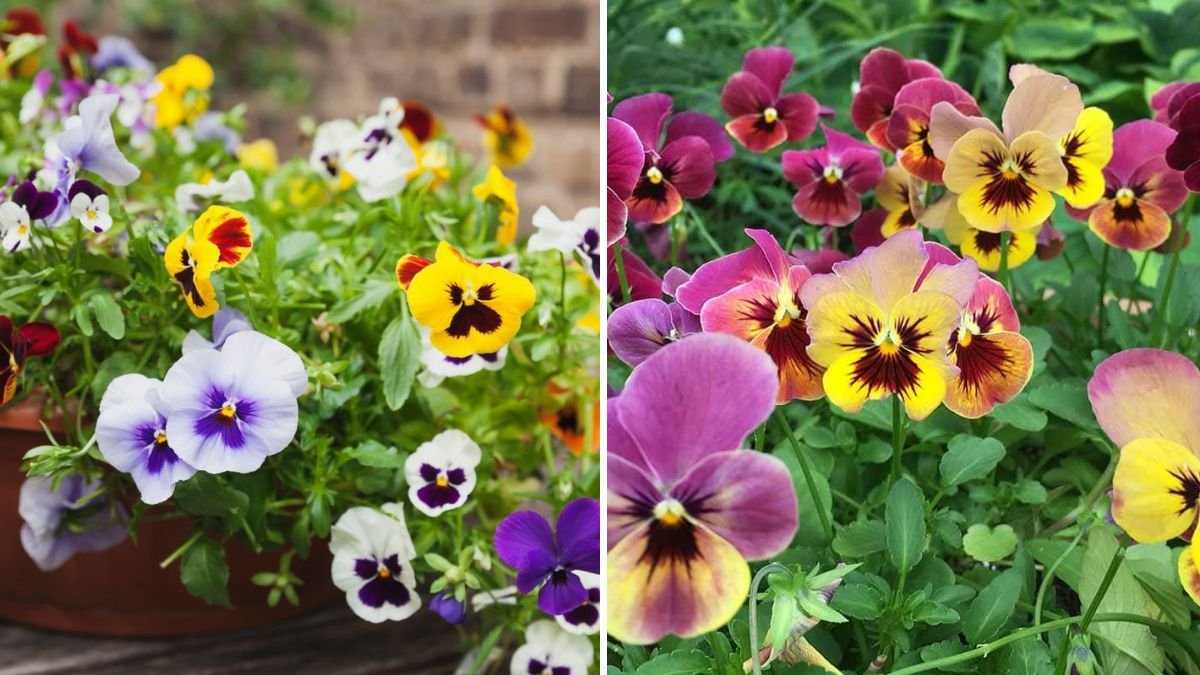Pansies (Viola × wittrockiana) are among the most popular cool-season flowers, prized for their vivid colors, charming faces, and long-lasting blooms. Unlike many summer flowers, pansies thrive in cooler temperatures, making them ideal for winter and early spring displays. With careful selection, planting, and care, gardeners can create vibrant, eye-catching gardens or container arrangements even during the cold months.
This article provides a comprehensive guide on how to grow pansies in winter, covering selection, planting, soil preparation, care, and design strategies for continuous color.
1. Why Grow Pansies in Winter?
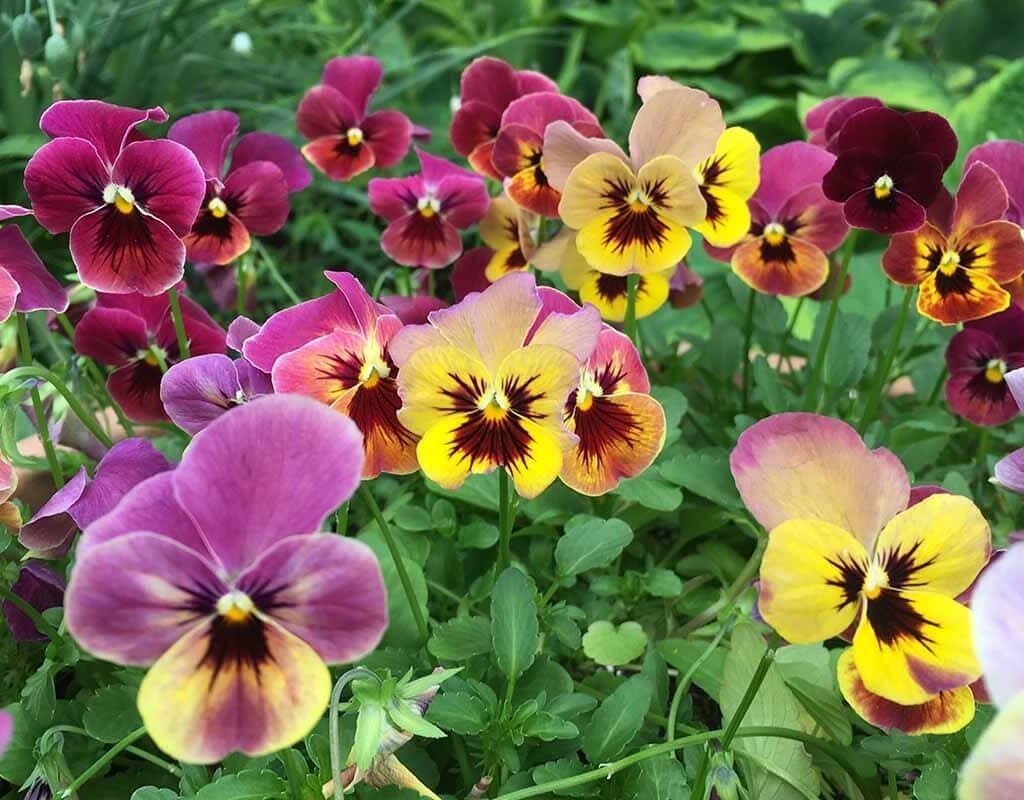
Winter gardening with pansies offers several advantages:
- Color During Dormancy: Provides vibrant hues when most plants are dormant.
- Extended Blooming: Pansies can bloom continuously from fall through early spring.
- Versatility: Suitable for garden beds, borders, window boxes, and containers.
- Cold Tolerance: Can survive frost and light snow, especially in hardy varieties.
- Pollinator Support: Offers nectar sources for early pollinators.
Winter pansies brighten outdoor spaces and enhance garden aesthetics during colder months.
2. Selecting the Right Pansy Varieties
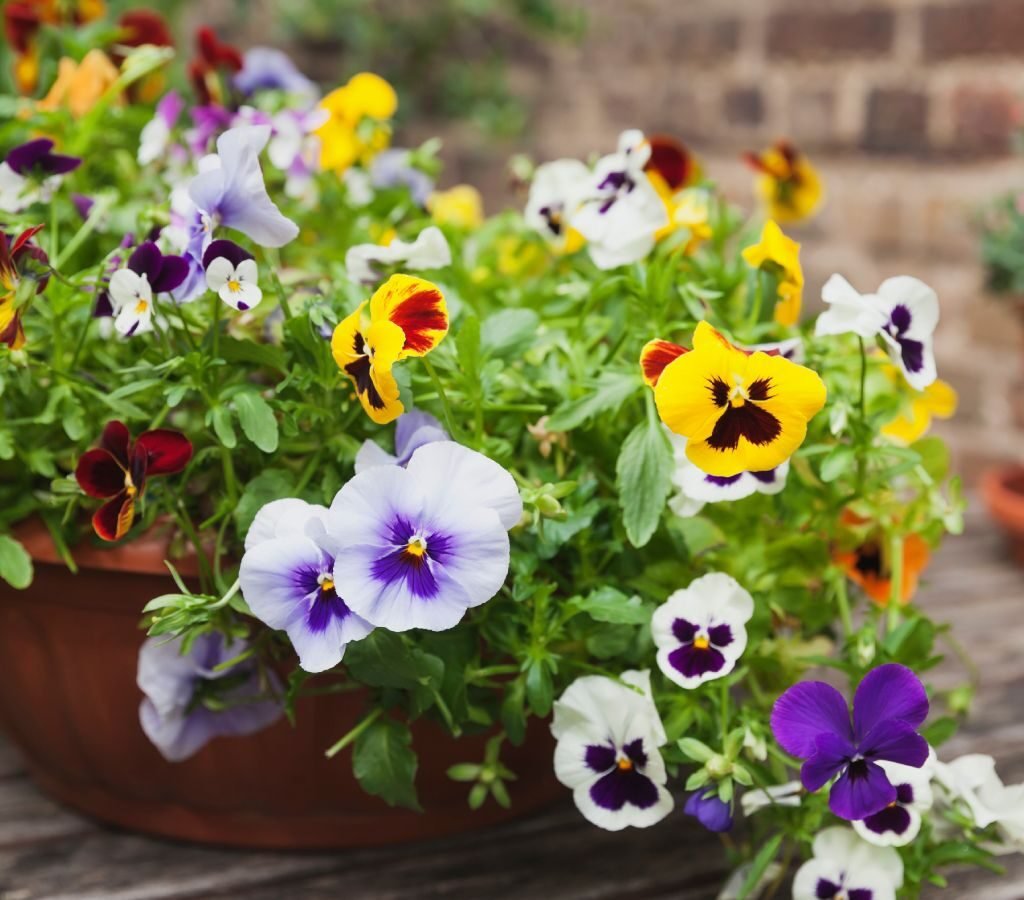
Choosing the right variety ensures healthy growth and abundant blooms in winter:
- Cold-Hardy Varieties: ‘Winter Pride,’ ‘Cool Wave,’ and ‘Matrix’ tolerate frost and cold temperatures.
- Compact Types: Ideal for containers and small spaces.
- Large-Flowered Varieties: Produce dramatic, eye-catching blooms.
- Mixing Colors: Combining blues, purples, yellows, and oranges creates striking contrast.
Selecting cold-tolerant and compact varieties ensures pansies thrive in winter conditions.
3. Choosing the Right Location
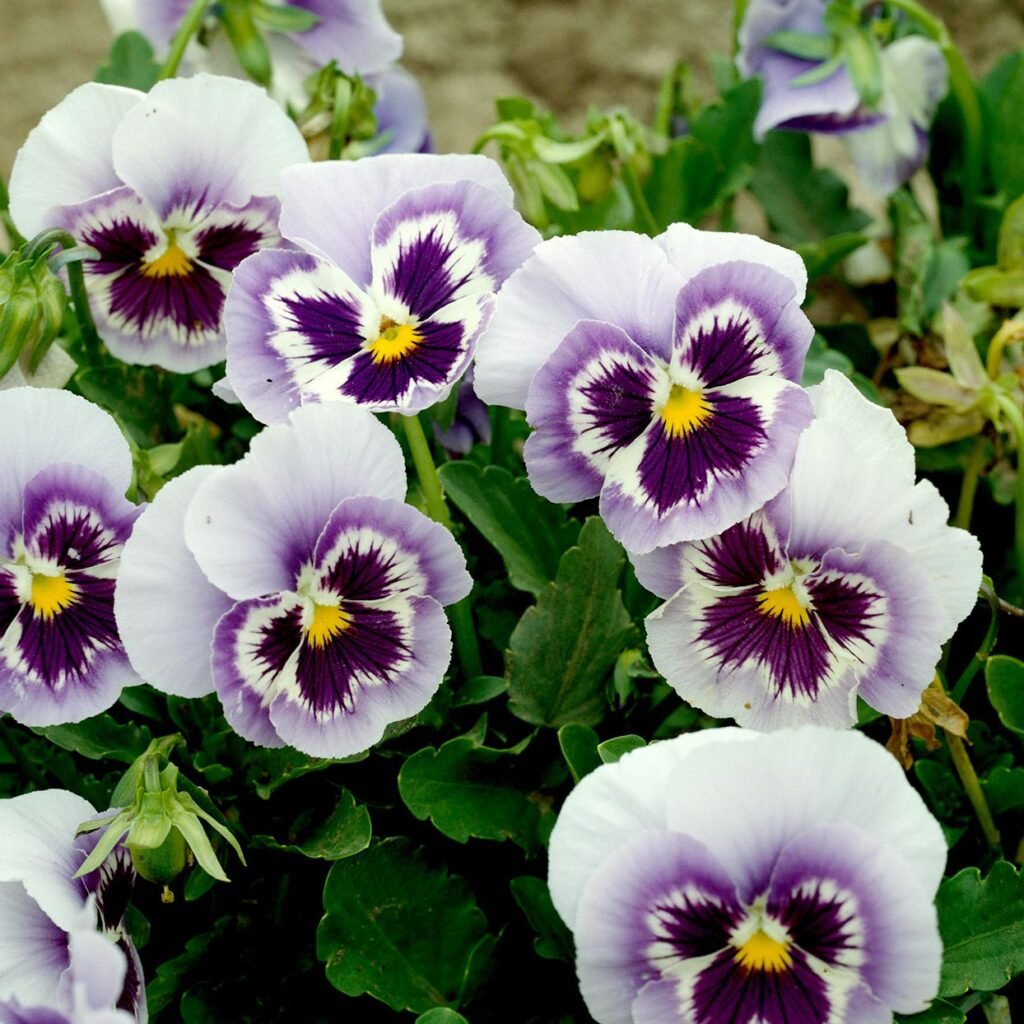
Winter-grown pansies require proper positioning to maximize growth:
- Sunlight: At least 4–6 hours of direct sunlight per day; morning sun is ideal.
- Shelter: Protect from harsh winds and heavy frost using garden structures or windbreaks.
- Elevation: Raised beds or containers improve drainage and reduce frost risk.
Proper site selection ensures healthy foliage and vibrant blooms even in cold weather.
4. Preparing the Soil for Winter Pansies
Soil preparation is essential for strong root development and winter survival:
- Soil Type: Well-draining soil rich in organic matter.
- pH Requirement: Slightly acidic to neutral (6.0–7.0).
- Enrichment: Incorporate compost or well-rotted manure for nutrients.
- Drainage: Add perlite or sand to prevent waterlogging, which can cause bulb or root rot.
Healthy soil ensures robust growth and prolonged flowering throughout winter.
5. Planting Pansies
Proper planting techniques maximize growth and bloom potential:
- Spacing: 6–9 inches apart to allow air circulation and prevent disease.
- Depth: Plant at the same depth as they were in the nursery container.
- Group Planting: Plant multiple pansies together in clusters for bold visual impact.
- Containers: Ensure pots have drainage holes and use a high-quality potting mix.
Correct planting ensures strong roots and early flower production.
6. Watering Practices
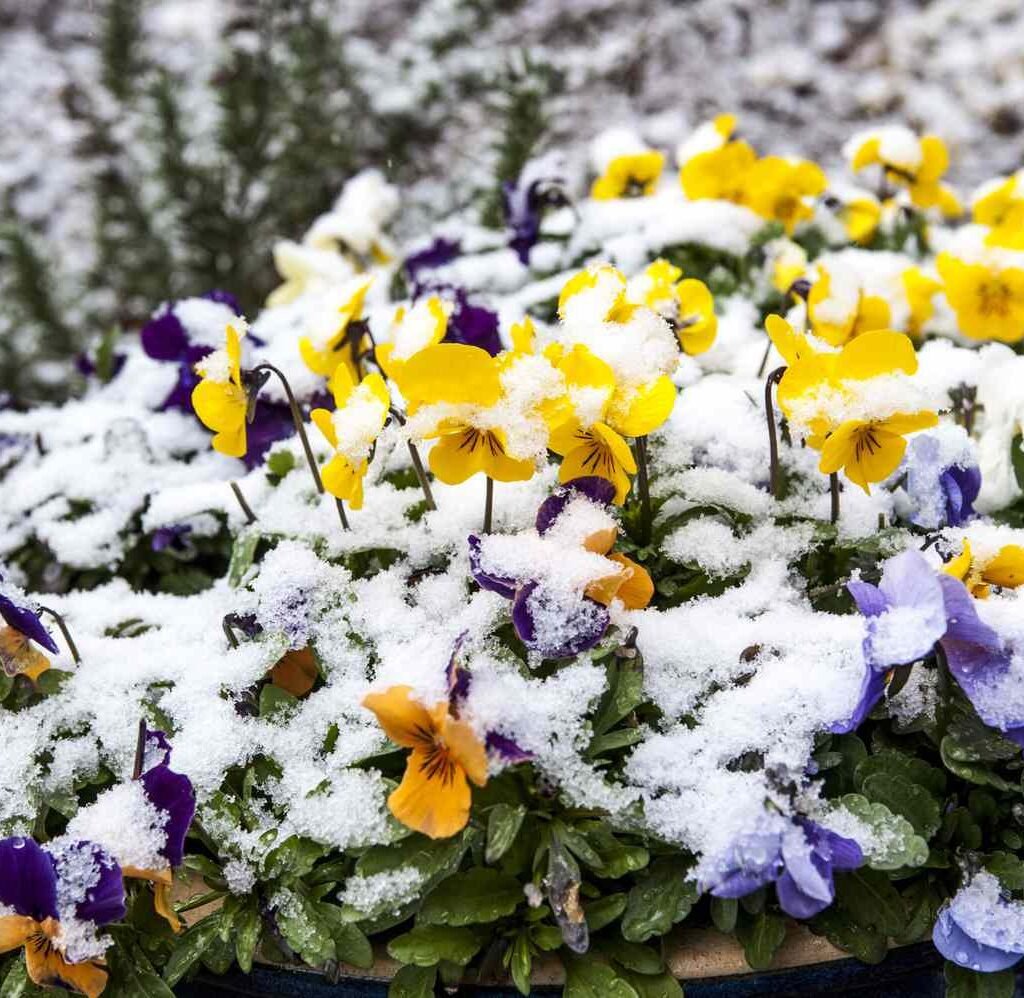
Consistent watering is key during winter:
- Frequency: Water when the top inch of soil is dry.
- Amount: Avoid overwatering, especially in cold conditions where evaporation is slower.
- Mulching: Apply a light layer of mulch to retain moisture and moderate soil temperature.
- Containers: Monitor closely as pots dry out faster than garden beds.
Proper watering ensures healthy foliage and vibrant winter blooms.
7. Fertilization for Winter Blooming
Balanced nutrition promotes continuous flowering and plant vigor:
- Slow-Release Fertilizer: Incorporate during planting for sustained nutrients.
- Liquid Fertilizer: Feed every 2–3 weeks during active growth and flowering.
- High-Phosphorus Fertilizer: Encourages robust flowering and strong root development.
- Avoid Excess Nitrogen: Prevents leafy growth at the expense of blooms.
Fertilization ensures vivid colors and long-lasting winter displays.
8. Pruning and Deadheading Pansies
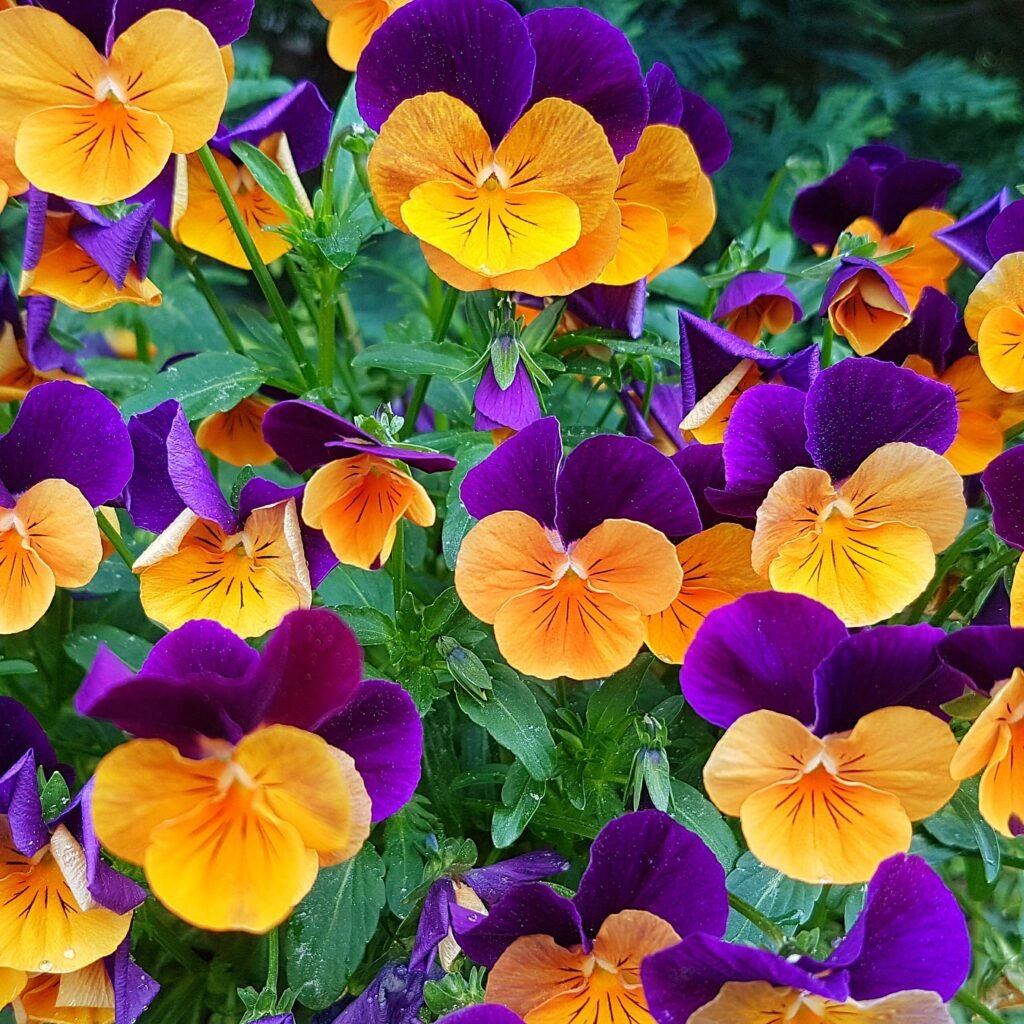
Maintaining blooms requires proper pruning:
- Deadheading: Remove faded flowers regularly to encourage new blooms.
- Trimming: Cut back leggy stems to maintain compact shape.
- Frequency: Deadhead weekly for maximum flower production.
- Impact: Reduces energy spent on seed production and directs resources toward flowering.
Pruning ensures continuous, vibrant blooms throughout winter.
9. Protecting Pansies from Frost and Cold
Despite being cold-tolerant, pansies benefit from extra protection:
- Frost Cloths: Lightly cover plants during severe cold snaps.
- Mulch: Insulates soil and protects roots from freezing.
- Container Relocation: Move pots to sheltered locations such as porches or greenhouses.
- Wind Protection: Use barriers to prevent leaf damage from cold winds.
Protection strategies help pansies survive harsh winter conditions and maintain flowers.
10. Pest and Disease Management
Winter conditions reduce some pests but vigilance is still necessary:
- Common Pests: Aphids, slugs, and snails may still affect plants.
- Diseases: Powdery mildew and root rot can occur in damp, cool conditions.
- Preventive Measures: Ensure proper spacing, good drainage, and air circulation.
- Organic Controls: Use neem oil, insecticidal soap, or natural predators.
Managing pests and diseases ensures healthy, uninterrupted winter blooms.
11. Container Gardening for Winter Pansies
Containers allow flexibility and mobility:
- Pot Selection: Large pots retain warmth better and accommodate multiple plants.
- Soil Mix: High-quality potting mix with compost ensures nutrient availability.
- Placement: Full sun or sunny porch locations enhance flowering.
- Mobility: Containers can be moved indoors or to protected areas during extreme weather.
Container-grown pansies allow gardeners to create vibrant displays even in small spaces.
12. Companion Planting with Winter Pansies
Companion planting enhances visual appeal and plant health:
- Other Cool-Season Annuals: Ornamental kale, snapdragons, and violas complement pansies.
- Color Coordination: Mix bright yellows, purples, and blues for eye-catching combinations.
- Layering: Combine tall and short plants to create depth in garden beds or containers.
- Pollinator-Friendly Plants: Early blooms attract bees and other pollinators even in winter.
Companion planting creates a cohesive, colorful winter garden.
13. Seasonal Care Summary
- Fall: Plant pansies to establish strong roots before winter.
- Early Winter: Maintain consistent watering and protect from frost.
- Mid-Winter: Regularly deadhead and monitor for pests.
- Late Winter/Early Spring: Begin fertilization and prune to encourage vigorous growth for spring.
Seasonal care ensures continuous flowering and healthy plants throughout the winter season.
14. Benefits of Winter Pansies
Growing pansies in winter provides multiple advantages:
- Aesthetic Appeal: Brightens gardens during the dull winter months.
- Pollinator Support: Early nectar source for pollinators.
- Versatility: Suitable for garden beds, containers, window boxes, and borders.
- Low Maintenance: Hardy and cold-tolerant, requiring minimal care once established.
- Extended Gardening Season: Offers visual enjoyment when few other flowers are in bloom.
Winter pansies provide color, vibrancy, and ecological benefits during the off-season.
Conclusion
Pansies are ideal winter annuals for gardeners seeking vibrant, long-lasting color during colder months. By selecting cold-hardy varieties, preparing well-draining soil, and providing proper sunlight, watering, and fertilization, gardeners can enjoy continuous blooms from late fall to early spring. Regular deadheading, pruning, and protection from frost maximize flowering potential, while container gardening and companion planting enhance visual impact. With careful attention and seasonal adjustments, winter-grown pansies transform gardens, patios, and balconies into colorful, lively spaces, providing beauty and cheer even in the coldest months of the year.
